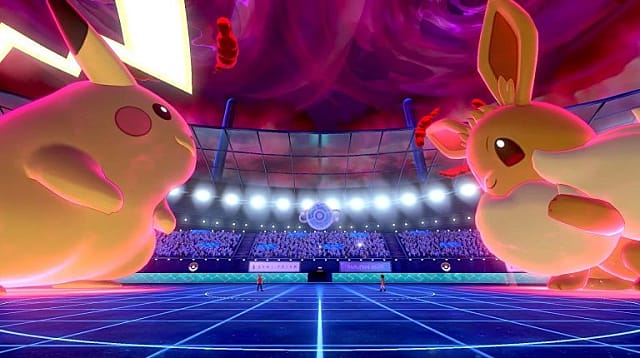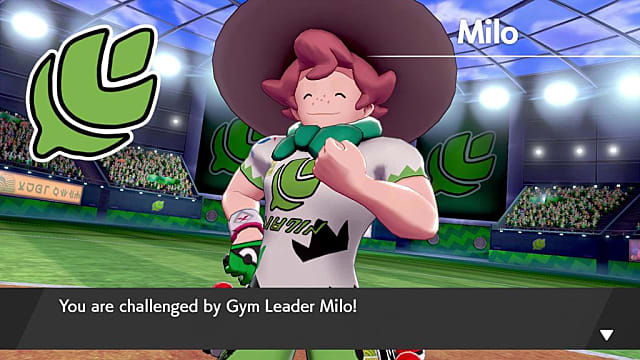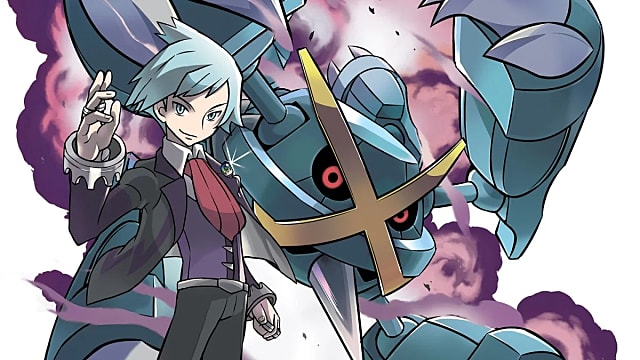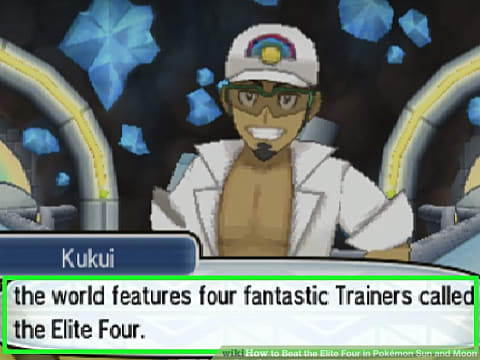The Pokemon series has a rich legacy to build on with every new entry, though surprisingly, the evolution of Pokemon is less straightforward than merely improving every time.
Pokemon’s journey is thornier than an angry Ferrosseed, full of tweaks and experiments that should have worked but didn’t, some that did work and got left behind, and some that completely baffle the mind.
With the latest Pokemon games — Sword and Shield — smashing sales records left and right, we decided to dig into what makes the series work and where it falls flat. We’re only talking mainline games in this retrospective, though, because the spinoffs are a whole ’nuther creature.
The Best and Worst Pokemon Regions
Pokemon didn’t start having actual stories until Gen V, so there’s not much use comparing them. Instead, it’s the region that helps contribute to each generation’s personality.
Some regions are bland, but hassle-free, while other regions present more challenge and visual interest at the expense of convenience. It’s understandable, though, because designing a host of new creatures and an entire world for them is a lot for a small team working on tight deadlines.
When You Give Pokemon Crayons and Construction Paper
Mentioning Sinnoh right away seems a bit contradictory. It’s the place that introduced “HM bloat” after all. Whoever thought creating Defog and Rock Climb while making them mandatory HMs was obviously in desperate need of an extended vacation.
Outside of that and some iffy bits on Mt. Coronet, Sinnoh may be the last great Pokemon region in overall design — at least for a while.
Sinnoh presents a good balance of long, tough routes with plenty of environmental points of interest, plus some shorter routes that cram challenges in a tiny space. On top of that is a generally wider variety of designs, especially compared to Hoenn, with snowy routes, mountaintops, sea routes, flower fields, and stone cities. Every section of Sinnoh is unique.
That’s part of the game’s central premise, too: the idea of a diverse and varied world full of different kinds of life. What’s particularly interesting here is how it builds on failure.
Hoenn tries to create a region based on a plot theme in land versus sea, but that flops. In theory, a region split between land and water sounds interesting. However, you can’t do all that much on the water other than swim. Diving is just swimming underwater, and then you swim some more. The towns and cities are afterthoughts.
Sinnoh benefits from being a bit less rigid with making the theme the central focus, letting the general idea of a wild world created by different Pokemon take hold.
PokeGlobe Trotting
And then it stopped.
Easily the worst aspect of region design is when Game Freak decided to explore other cultures. It’s a noble idea, exposing young people to different ways of life. But the result — at least for a while — turned out like a Pokemon version of “It’s a Small World,” prioritizing over-the-top references to other cultures instead of doing anything exciting or meaningful.
Gen V’s Black and White started a trend towards PokeTourism, moving away from the idea of a region built around a story concept and making the region itself the concept.
The only thing is, Pokemon’s NPCs are too one dimensional to make that push towards other cultures work well, so it relies on the entire region to pull it off. Unfortunately, the U.S.-vibe Unova is supposed to give off doesn’t continue outside Castelia City, and even then, it doesn’t serve much purpose other than showcasing the Nintendo DS’ hardware capabilities.
There’s the entertainment city Nimbasa, but Jubilife and Goldenrod already have that covered. Opelucid is just Blackthorn with a twist. The entire eastern half of Unova has no relevance to the main game. And then you get places like the vast Icirrus Moor, which is big, and that’s it.
Kalos is a Unova repeat, sending you around a big circle, hitting all the main terrain notes: rocky, ice, seaport, flashy big city, and so on. There are a few French-inspired things added as dressing, with some story about a 3,000-year-old zombie king that can be filed under “H” for “hash-induced.”
Alola does the same thing, making a meal out of the Hawaiian location without integrating it into the story or gameplay mechanics.
Galar, The Happy Medium
Sword and Shield’s Galar region is a happy marriage of these two concepts, of planned design that emphasizes culture. It’s inspired by a specific culture again, yet it’s just a few aspects that get the focus. These are built into the area’s core, like the Champion Cup. Everything else flows from there.
That makes Galar a sharp contrast to the superficial regional flavors of Alola that are constantly shoved in your face but don’t do much else.
It’s true we still have some forced regional dialogue in Galar. Again, we also have vast open spaces, exciting cities, and enough varied geography to offset the same-y-ness of the ice, forest, and rocky settings. The routes are still not quite as impressive as those well-worn Sinnoh paths, but the Wild Area exists to make up for that.
If Game Freak is going to keep creating regions based on specific cultures, hopefully, the changes we saw with Galar continue.
The Best and Worst Gym Leaders
Outside of the regions themselves, another important aspect of any Pokemon game is who you face as your primary opponents: the Gym Leaders and the Elite Four.
The Gym theme is one of the staler aspects of Pokemon and has changed the least over time. You can bet there’s always going to be a Fire, Water, Grass, and Rock-type Gym, with other types in rotation, like Psychic, Ice, and Dragon. That means there are only two candidates for “best Gym Leader rosters.”
Shattering Expectations in Diamond and Pearl
The first two games of Gen IV shook up the Gym system. Not like Sun and Moon did, through complete abolition, but by throwing curveballs with Gym-themed Pokemon that can take out your team.
A good many of the leaders toss in at least one dual-type Pokemon after the second leader — Maylene’s Lucario and Meditite, Byron’s Bronzor, Candice’s Medicham, and half of Volkner’s team. Crasher Wake might be more traditional, but his Gyrados can crush a fragile Electric-type in seconds.
Typically, you get Gym Leader rosters with either pure types. Platinum nerfed this feature with more traditional and less challenging Gyms, unfortunately, and we haven’t seen it since.
Even the Galar Gyms in Sword and Shield are relatively traditional, though the inclusion of Gigantamax Pokemon — with special Gigantamax moves — from the third Gym on does shake things up.
Alola, The Confused One
Talking about Gyms and changes throughout the series means we must naturally touch on Alola — again. There isn’t much to say here, though your opinion will naturally vary.
Gen VII replaced Gym challenges with Trials, but these can’t be considered improvements. Some people like them, but I don’t see how “which dancing Marowak is different??” can compare in any way to “challenge this super-strong Gym leader.”
These always end with a battle against a turbo-powered Pokemon anyway, so why even bother with the goofy mini-game? It was a further step towards patronizing players and assuming young children are naturally stupid, and it’s a mechanic that hopefully never comes back.
If something has to be changed, why not go for typeless Gym Leaders, taking the original Sinnoh concept further?
Then there’s Galar’s move towards putting Gym Leaders in your path more often, which also opens some possibilities for the future of Gym challenges. In short, significant change isn’t always for the better, especially if that change is done only for the sake of change.
The Best Elite Four
Unlike Gym Leaders, the Elite Four does tend to vary wildly from game to game, though with no real visible trend (unless you count “rehash”). With a different set of trainers focusing on different types, you’d think there wouldn’t be a way to compare them.
However, there are some definite winners and losers when it comes to the Elite Four, and the Elite Four exemplifies the struggle with the change that Pokemon has faced from the beginning.
Karen Will Be Your Opponent
Johto does a lot of things right, but the Elite Four isn’t one of them. Will is an altered Lorelei, Bruno is as ridiculously easy as ever, and Koga isn’t much better. Then we have Karen, the Agatha of Johto.
Karen is a trainer meant to take advantage of an underused type, except oops — there aren’t enough Pokemon of that type to make it work. Johto introduces the Dark-type Pokemon, with a total of three Dark-type Pokemon: Umbreon, Houndour/Houndoom, and Murkrow.
Karen uses them all, though Murkrow doesn’t count. And even though Murkrow isn’t a pushover, the Pokemon wasn’t much to write home about until Gen IV introduced its evolved form, Honchkrow.
So Karen has to supplement that missing piece with two non-Dark types the same as Agatha, opting for Poison instead. Sorry, but the manager says you’re wrong: Vileplume isn’t a Dark-type, KAREN.
Hoenn — Prepare for Trouble
After the too-familiar Johto Elite Four, Hoenn’s diverse types and brutal opponents are hugely welcome, and you can see a bit of that Sinnoh Gym Leader philosophy on display here.
If a member of the Hoenn Elite Four doesn’t have a dual-type ‘mon to mess you up, they pack obnoxious status moves or monster Pokemon — like Walrein or Drake’s Altaria — that can destroy you before you even have a chance to do anything.
The big standout here, though, is Steven. No, a Rock-type Pokemon trainer isn’t that special on its own. Two generations of Brock then Roxanne saw to that. What makes Steven unique alongside his dual-type team from Hell is how he’s the first Champion who isn’t Lance, which means he’s also the first Champion who doesn’t use Dragons.
Steven didn’t completely shake up the Champion mechanic — that happened with Cynthia — but it was an injection of newness into a formula that would have become stale very quickly with another Dragon master.
Sinnoh — And Make It Double
The Sinnoh Elite Four follows a similar path as the Hoenn League and ups the challenge — like, y’know, the strongest trainers in the region should do.
Diamond and Pearl toss dual-types and weird roster members in the mix, much like Flint’s Lopunny and Drifblim. Diamon and Pearl was the first time it seemed like the top trainers earned that title since they tried to be well rounded. Plus, it forced players to bring a well-rounded team, except Bertha, who was crap.
Platinum nerfed that again but increased the overall power of each Elite Four member’s team with more and stronger Pokemon for each — except Bertha, who is still crap.
Cynthia is the real star, though, even more than with Steven. That she’s the first lady Champion is one thing, though Pokemon never had problems with strong women. It’s not even because she is like Lance 2.0 with the significant role she played in the story. No, Cynthia is the first Champion with a diverse roster of Pokemon custom-made to trash you no matter what, and it’s telling she’s the only trainer not to get a significant roster change in Platinum.
Remember Me?
Alola doesn’t really have an Elite Four until it does at the end. Then it’s just the same Kahunas you already fought — for the most part.
There’s some interesting story integration, but it’s a bit stale feeling.
Kukui has a few glaring weaknesses and a roster seemingly chosen at random that make the fight anticlimactic compared to Cynthia or even Kalos’ Diantha. This, combined with the story that takes center stage throughout the games, means your League fight is sort of just a thing that happens and whatever.
Moving Back Towards the Center with Galar
Galar, unfortunately, has a similar setup, where you fight some of the same Leaders you fought before. However, it improves on the Alola formula in a few key ways.
The story integration works a bit better in Galar since Sword and Shield are built around everyone vying for a spot in the League against the Champion. Plus, you end up with a total of seven fights instead of the usual five. It’s the closest to the Pokemon anime that any game has gotten, with the idea of multiple rounds.
More importantly, each opponent has at least one ‘mon meant to throw you off like the Hoenn and Sinnoh Leagues, with Raihan’s near-invincible Duraludon being the best example of the lot.
Leon is one of the best Champions since Cynthia as well. Not only does he give you your first Pokemon, but he’s also held up as the pinnacle of the Pokemon world. It imbues the match with an urgency missing for a long time, helped by Leon’s relatively challenging and Cynthia-like roster that will put your skills to the test.
It’s a good lesson, and one Game Freak hopefully takes to heart.
The Pokemon — Best and Worst Pokemon Design
Pokemon design doesn’t follow much of a trend, either, though one could argue the road got a bit bumpier after Gen III. It’s easily the most divisive topic as well. You might hate my favorite Pokemon, and I could think your favorite Pokemon is complete garbage. Heck, some Pokemon literally are complete garbage.
Pokemon design has always bordered on the bizarre. There are animal-inspired designs like the Squirtle family mixed in with seductive Psychic humanoid creatures and genetically modified mutants. That doesn’t leave much room for saying any Pokemon is “bad” or “weird,” but it’s safe to say Game Freak tends to do its best work when the developer isn’t tied down to previous generations.
When Old Was Still New — Johto and Hoenn
Johto is a bit of an exception to that rule. Game Freak designed 100 new Pokemon to populate the region. Still, instead of rehashing the Kanto bug trilogy or making another new bat ‘mon, these older Pokemon live alongside the new ones. Such a design felt like a healthy balance between nostalgia and newness, with plenty of fresh designs to make it sparkle.
Gen III did the exact opposite, and it was a smart move despite being a bit of a gamble. For it to work, the designs had to be exciting and engaging — and they were. Gone are most of the familiar faces, and in their place waddle strange little rabbits called Whismur, deadly sloths, and a familiar-seeming caterpillar. Still, none of these have much to do with their specific region; they just exist.
Look, It’s New! Just Kidding, It’s the Same Thing
Looking back, you can see Gen IV is where things started to get a bit confused. The Sinnoh Pokedex is notable for how few completely new Pokemon it adds, with many of them just being different variations on existing ‘mon. Some can reasonably be called palette swaps as well, like the Starly line that isn’t Pidgey — but is basically Pidgey — or Fat Persian, er, I mean “Purrugly.”
Gen V tried adopting a Hoenn model, with a whole massive new roster of completely new ‘mon, but it also suffers from Sinnoh syndrome.
Yeah, a lot of these new Pokemon were great, like Zebstrika and the Litwick family. But a lot of them were variations of what came before, and it just seemed like ticking the boxes: Rock-type and Fighting-type families that require trade to evolve? Check. Normal/Flying bird trio? Check. Two bug lines, one aggressive, the other not? Check. Version exclusive Grass lines? Sigh…check.
From there, the trend has been increasingly towards the familiar, with Gens VI and VII giving us massive Pokedexes with less than memorable new Pokemon, or if they are memorable, they get swamped by the hundreds of other ‘mon vying for attention.
Regional Pokemon Flavo(u)r
Interestingly, Gen VIII has the fewest new Pokemon of any recent game, yet these stand out the most. Part of that is because we didn’t see them all until later. But the other part is how they’re handled. Just some slight tweaks to the formula keep it seeming fresh.
Your Rock-type Rolycoly is a dual Fire-type, is fast, has high special attack (??), and doesn’t have to be traded to get its final evolved form. There’s a cutesy Normal-type right at the beginning, but it’s a freaking monster squirrel-tank that can power through most opponents. There’s a new Bug line, but it’s weird, and it’s a Psychic radar to boot, and the new Flying line is part Steel — not new in itself (Skarmory), but it’s how it’s handled that makes a difference.
The familiar is still here, and you can forget Blipbug and get your Caterpie if you want. Like in Gen II, the new and old complement each other, and like Gen III, there’s enough difference in how they’re handled to convince long-time players this is a brand new adventure.
Even the silly ones like Alcremie have a purpose, and more importantly, you get to interact with them. You have to whip Milcery (not literally) to get Alcremie, find out if Sinistea is authentic or forged, and push Farfetch’d to greater heights of bravery until it evolves.
Like with the Champion Cup, this is yet another way the Galar region makes the Pokemon world feel more alive and closer to the anime. Even if there aren’t as many new Pokemon, this is the best way forward for the series. It doesn’t require shaking the formula up that much.
It’s surprising to see a series as revered as Pokemon have a bit of a design potluck from the beginning.
The core gameplay might remain the same, but there have been a lot of changes in how these things are implemented. Region design experienced a bit of a crisis when it went from Japan-only inspiration to global. Still, hopefully, the design team has a better idea of how to make them interesting from here on.
The same goes for the Gym Challenge and Elite Four. Chances are, though, feedback on difficulty and overall goals for the next gen mean there probably won’t be any identifiable pattern or logic in how the games’ challenges move forward.







